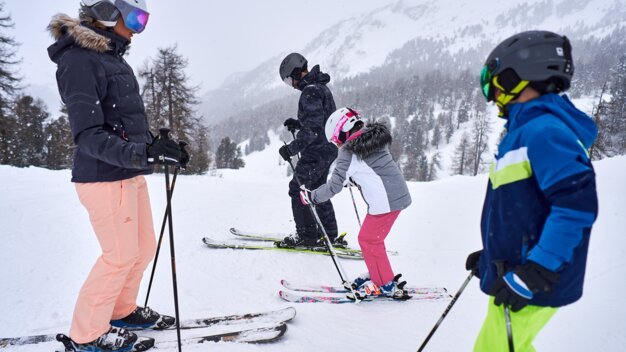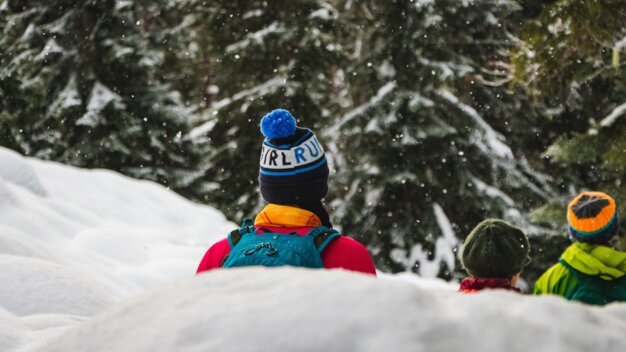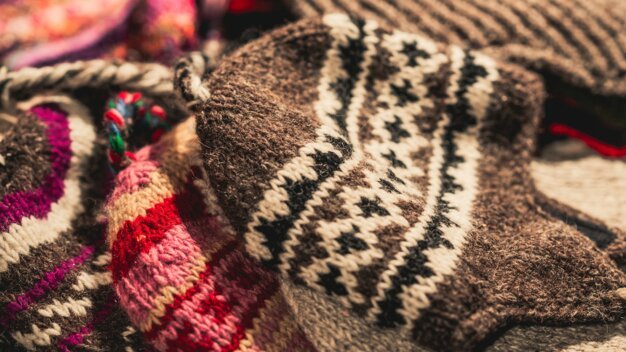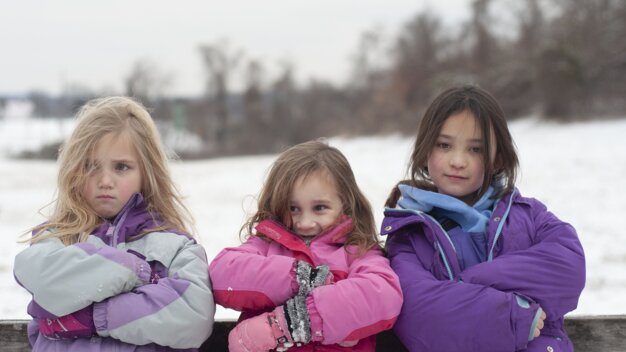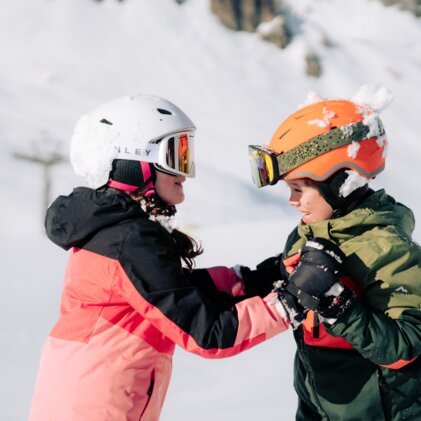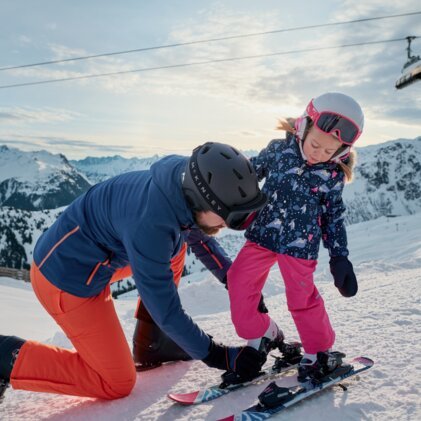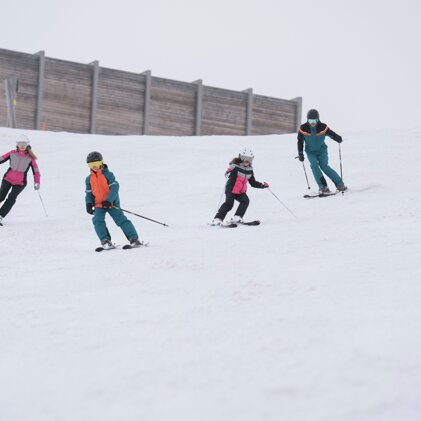
"Mummy, I'm cold!" "Daddy, my jacket is wet!" Comments like these can quickly spoil the fun of a winter holiday. That's why choosing the right ski clothing for kids is so important. In this article, we've summarised what you should look out for when buying new equipment.
The onion principle: layering for your children
It's amazing: Sometimes kids play in the snow for hours without even feeling the cold. Other times, they freeze within a few minutes. Wearing the right clothing and accessories helps to keep your children comfortable. Multiple functional layers are especially important for skiwear, as they provide the best protection against cold and wet.
Plus, the layered look gives them the freedom of movement you need for skiing or playing in the snow.
Layer by layer: the right ski clothing
Why do you wear multiple pieces of clothes? The onion principle requires at least three layers of skiwear. Each one has a specific function:
- Base layer/ski underwear: Ensures that moisture is absorbed and transferred to the outer layers.
- Mid layer: Retains body heat.
- Hard shell: Protects against the elements and allows moisture to diffuse through the membrane.
The practical thing about the onion principle is that the many layers can be easily put on and taken off as the weather and temperature change.
3 layers of kids’ ski clothing
Layer 1: Functional underwear
Thermal underwear lies directly against the child's skin, so it should therefore be made of high-quality materials. Many manufacturers you can find in the INTERSPORT Rent shop use merino wool or a blend of different synthetic fabrics. It is important that the top and bottom are stretchy and can wick sweat away from the body quickly.
Layer 2: Insulated layer
As the name suggests, the middle layer of ski clothing is designed to keep the body warm. A fleece shirt or jacket is usually the first choice, as the fabric will wick moisture without becoming saturated. Tip: The garment should also protect you from draughts, so avoid unnecessary zippers when choosing the insulated layer!
Layer 3: Weather layer
The outermost layer of the onion principle is always a ski jacket and ski trousers. They keep cold, wet and wind away from your body.
As you can see, the layered look isn't that difficult!
Step by step to the right ski clothing for kids
When choosing equipment for your children, there are other special features to consider in addition to functional layers. Let's take a look at what makes kids’ skiwear special:
Ski jacket, ski trousers or a suit for your children
Kids’ ski clothing has a few different rules than adults’ skiwear. Since children spend a lot of time especially right in the snow when skiing, the fabric needs to be reinforced around the buttocks and knees. Of course, the garments should be breathable, windproof and water resistant. Some manufacturers use vents to allow even more air circulation.
Functional underwear for kids
Children's thermal underwear is all about freedom of movement and not restricting the little ones from moving around. High-quality products usually consist of two layers of fabric: an inner layer that sits close to the skin and absorbs sweat, and an outer layer that wicks it away. Cotton is not recommended for children's ski underwear because it absorbs moisture and does not release it. Risk of chafing!
Ski socks
Sensitive children's feet will appreciate ski socks that protect them from pressure points! That's why kids’ ski socks - just like those for mom and dad - are reinforced in high-wear areas like the shin. This reduces the pressure from the boots and provides extra comfort.
Ski gloves or mittens?
One of the most frequently asked questions about skiing: ski gloves or mittens. Mittens are ideal for young children because they are easy to put on and take off as well as this models keep little fingers extra warm. Older kids, however, should wear gloves because they give them more control over their ski poles. Turning and gripping are easier when young skiers can move their fingers freely.
Hats and helmets for kids
Many ski helmets for children have an additional cap to protect the head from wind and weather. A thin hat under the helmet is highly recommended. However, avoid thick knitted models with pom-poms or ears, as these can cause pressure points!
Ski jumper or fleece jacket for the little ones on the slopes
As mentioned above, fleece jackets come into play as an insulating layer. For cold winter days, we recommend a micro-fleece ski jumper that not only keeps you warm but also looks stylish. Good to know: Accessories like hooded fleece jackets are not a good choice for children's ski outfits because the extra fabric in the ski jacket is very restrictive. Look for a fabric that dries quickly.
Care: accessories for kids’ ski clothing
Warm and functional skiwear is important for children and their skiwear. To maintain the fit for a long time and guarantee the performance of the functional gear, proper care is essential.
Parents should use special detergents for functional materials, because they preserve breathability and waterproofing. They also remove unpleasant odours, whereas normal detergents or even fabric softeners can damage the delicate fibres and membranes.
Tip: After a few washes, it is recommended that ski jackets and trousers be treated with a waterproofing agent - either wash-in or spray-on products - to maintain their water-repellent properties and ensure that children are optimally protected for their next adventure.
Frequently asked questions about kids’ ski clothing
What should they wear under a children's ski suit?
As with adults – whether ladies or gentlemen – children should wear at least functional clothing in form of a base layer for the upper body and appropriate trousers for the legs under their ski suit. This ensures that moisture is wicked away from the skin and transferred to the outside. Depending on the temperature, a mid layer is also recommended to retain body heat.
What should you look for in a ski jacket for children?
When choosing a new ski jacket for your kids, look for the following features:
- Waterproofing: A water column of approx. 10,000 mm is recommended to keep moisture out. Sealed seams and water-resistant zips are an additional plus.
- Breathability: Children sweat too, so you should look for a membrane that wicks moisture away from the skin while keeping water out.
- Fit and mobility: Make sure that the jacket fits properly, even if the kids are still growing. Otherwise, you risk wind and snow getting under the jacket.
- Snow protection: An integrated snow skirt on the hem and protectors in the sleeves keep snow out.
- Safety and visibility: Bright, eye-catching colours help you keep an eye on your kids. Details like the RECCO system offer additional safety.
Which children's ski jacket keeps them warmest?
Ski jackets are also known as hard shells, and their purpose is to protect you from the elements. They allow moisture to diffuse through the membrane, while water droplets roll off the outside. The ski jacket itself is not responsible for keeping you warm. That job is taken care of by an appropriate mid layer. It stores heat and reflects it back so your upper body does not cool down.
INTERSPORT Rent tip
The RENTertainer recommends
If this is your first ski holiday with your kids, buying all the equipment can be quite expensive. Besides, your kids are still growing and will need new gear on a regular basis. Thanks to our rental service, you can get the right jacket, trousers and everything else you need at our INTERSPORT Rent shop in the resorts.
Our experts will help you choose and have a few tips on what there is to discover in the surrounding area. We look forward to seeing you.
Related articles
You may also be interested in:
